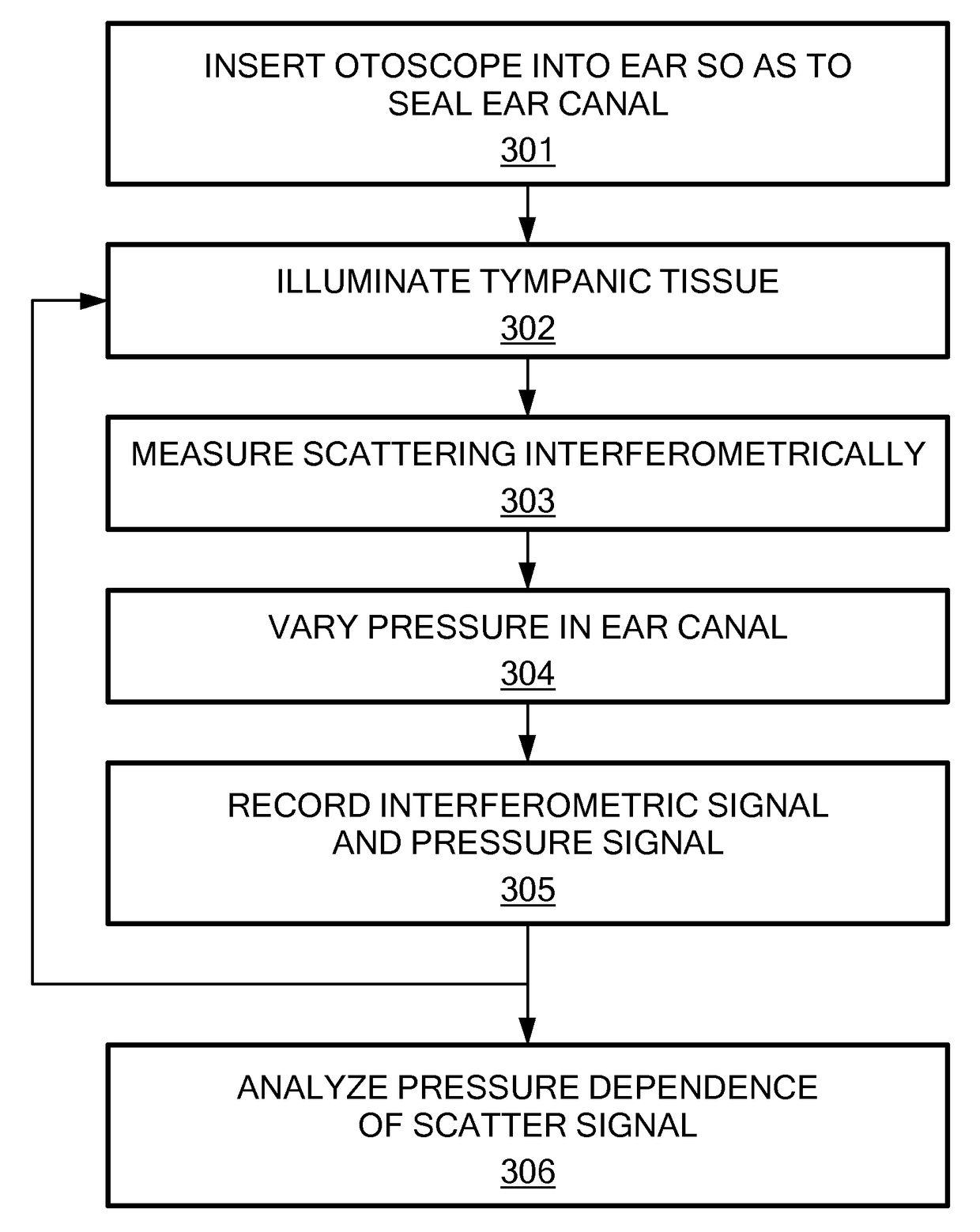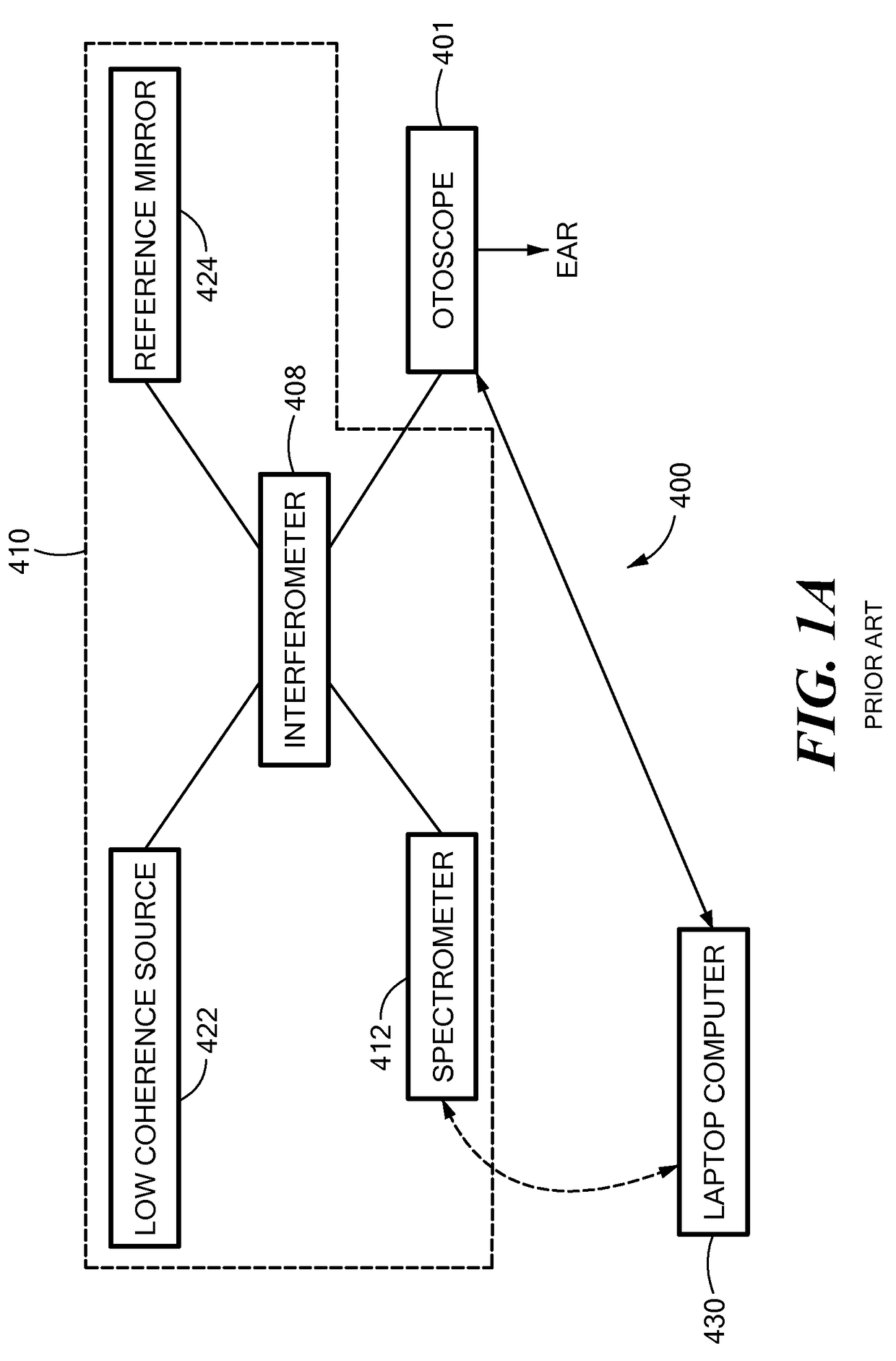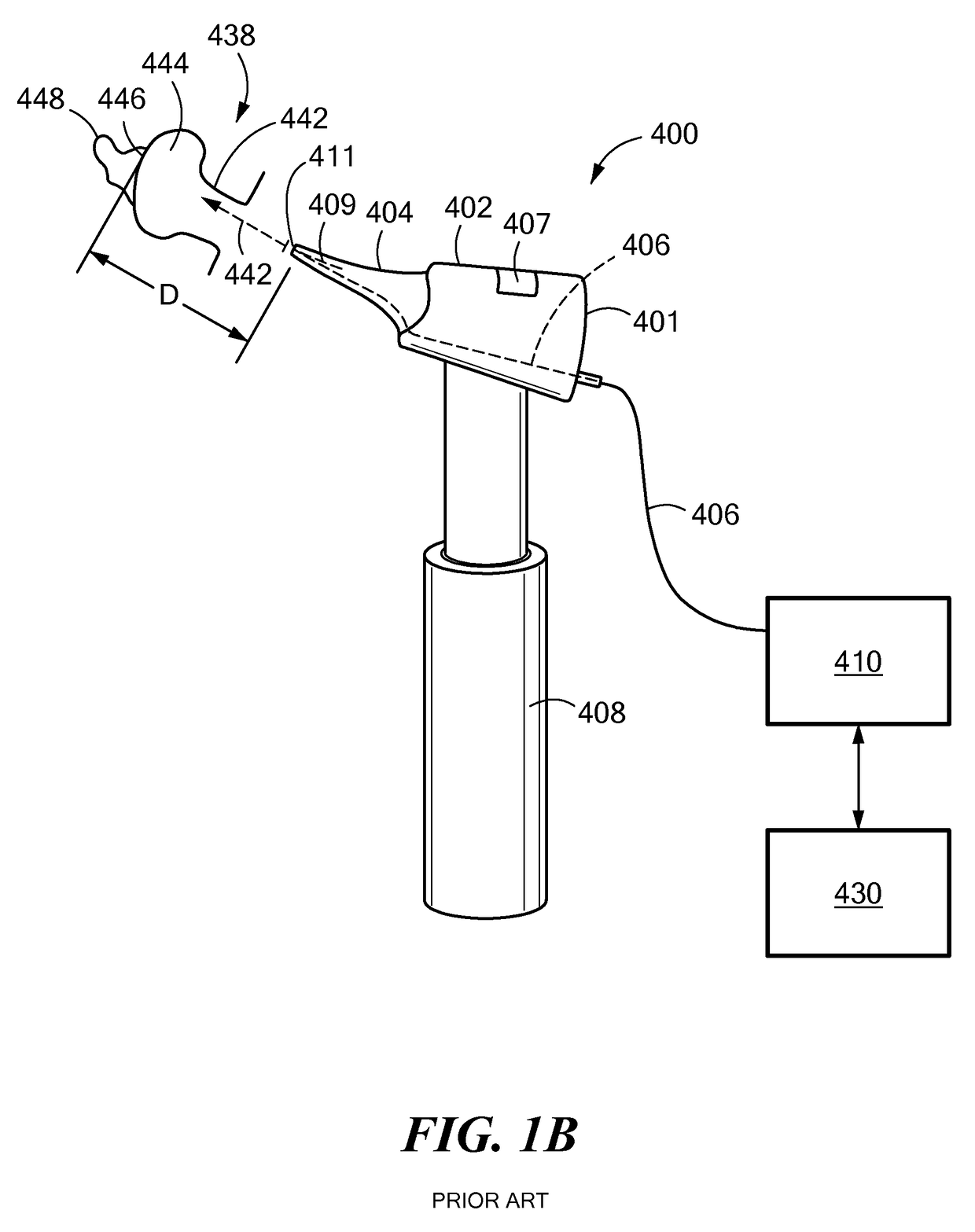Quantitative pneumatic otoscopy using coherent light ranging techniques
a light ranging and quantitative technology, applied in the field of three-dimensional imaging of ear tissue, can solve the problems of limited clinical practice, limited use experience, and limited scope of primary care or general pediatrician's office limitations
- Summary
- Abstract
- Description
- Claims
- Application Information
AI Technical Summary
Benefits of technology
Problems solved by technology
Method used
Image
Examples
Embodiment Construction
[0029]In accordance with embodiments of the invention, a system is provided for pneumatic otoscopic imaging. The system has a source of light and a hand-held otoscope for abutment with an ear canal for directing the light to ear tissue and for collecting scattered light from the ear tissue. The system also has an interferometer for combining the scattered light from the ear tissue with a reference beam for generating an interferometry signal, a pneumatic port coupled to the hand-held otoscope for governing a pressure within the ear canal, a pump for varying the pressure within the ear canal and for generating a pressure signal, and a processor for receiving the interferometry signal and the pressure signal and for generating therefrom a quantitative characterization of the ear tissue under a specified condition of pressure within the ear canal.
[0030]In accordance with alternate embodiments of the present invention, the pneumatic otoscopic imaging system may also have a controller fo...
PUM
 Login to View More
Login to View More Abstract
Description
Claims
Application Information
 Login to View More
Login to View More - R&D
- Intellectual Property
- Life Sciences
- Materials
- Tech Scout
- Unparalleled Data Quality
- Higher Quality Content
- 60% Fewer Hallucinations
Browse by: Latest US Patents, China's latest patents, Technical Efficacy Thesaurus, Application Domain, Technology Topic, Popular Technical Reports.
© 2025 PatSnap. All rights reserved.Legal|Privacy policy|Modern Slavery Act Transparency Statement|Sitemap|About US| Contact US: help@patsnap.com



